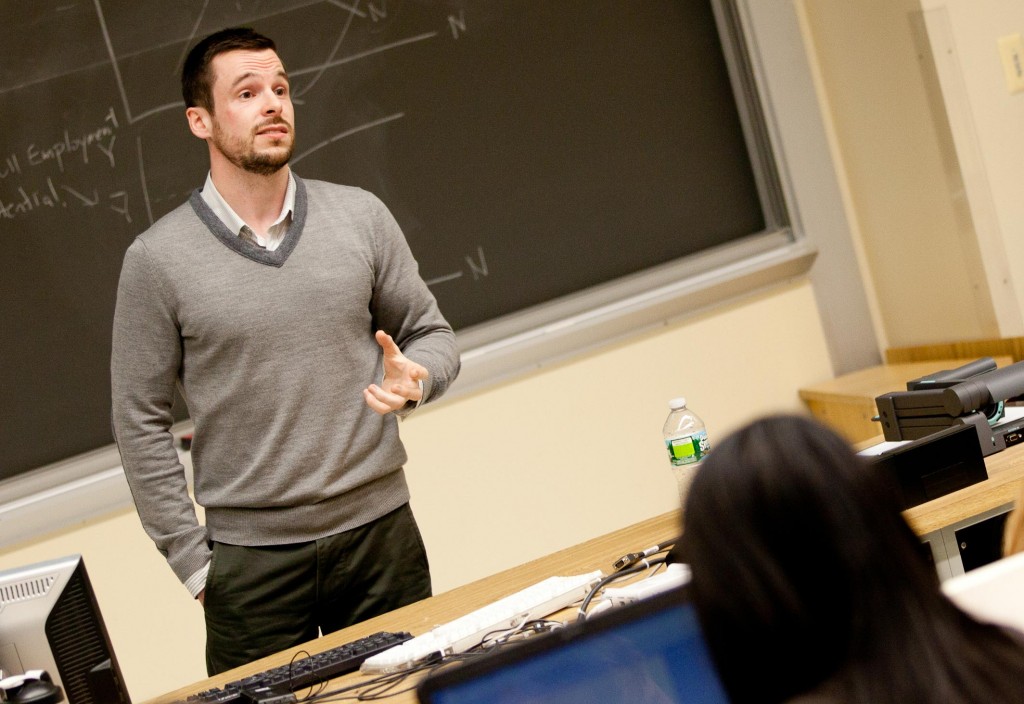
David M. Frost, an assistant professor at Columbia University’s Mailman School of Public Health, spoke before roughly 100 people Monday afternoon about relationships that are too close — or maybe, not close enough — for comfort.
Frost shared the findings of his two recent studies on closeness in relationships, which focused specifically on the discrepancy between individuals’ ideal level of closeness to their partner compared to their actual level of closeness.
“How close is a healthy amount of closeness?” Frost asked. “It doesn’t matter whether you’re too close or not close enough.”
According to Frost, what matters is the discrepancy itself.
“People who have the least discrepancies tend to be the most satisfied,” Frost said. “Closeness discrepancies are negatively associated with relational well-being and mental health outcomes.”
The studies measured relational well-being by relationship satisfaction, sexual satisfaction and how often an individual considered breaking up with his or her partner.
In Frost’s studies, thousands of individuals rated both their ideal and actual levels of closeness on a scale of one to six — one being the least close, six being the closest. The average ideal level of closeness was between four and five.
“The majority of people in the sample were not getting as much closeness as they wanted,” Frost said.
Those who claimed that their actual level of closeness matched their ideal comprised the second largest group. Only about 5 percent of the 1,700 people in the studies had positive discrepancies, according to Frost.
Frost said that individuals with negative discrepancies were three times more likely to break up with their partners over the next three years than those without discrepancies. Those with positive discrepancies were only slightly less likely to break up with their partners over the next few years.
However, the studies showed that whether one’s ideal level of closeness is above or below his or her actual level of closeness does not matter nearly as much as the size of the discrepancy.
“Before coming here, I would have said that, if anything, being not close enough would be more detrimental than being too close,” said Nicole Locicero, a sophomore majoring in accounting.
Frost said that people with positive discrepancies talked about not having enough space or wanting to spend more time with their friends, whereas people with negative discrepancies talked about not sharing similar goals or priorities with their partners and lacking enough intimacy with them.
“We don’t see any differences based on gender,” Frost added.
He argued that this might disprove the stereotype that men generally need more distance in relationships than women do.
The studies were conducted in the United States and in Canada, and the majority of the people in the study were females who lived with their spouses.
“I definitely appreciate the research he is doing,” Locicero said. “I think that it’s relatable for anyone in a relationship.”


